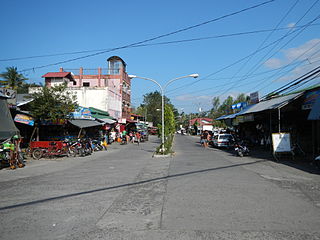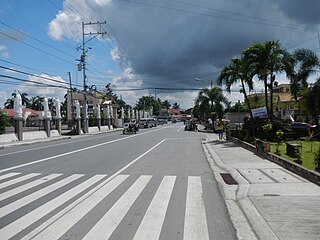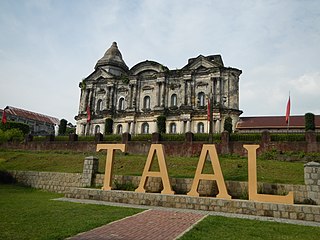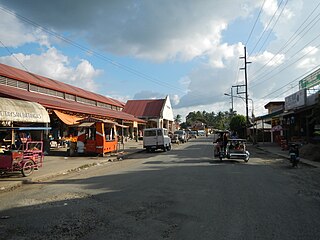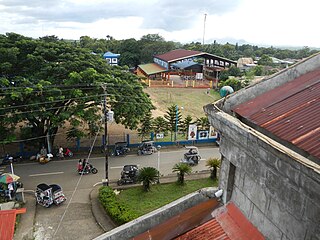Calatagan Bayan ng Calatagan Kalatagan | |
|---|---|
| Municipality of Calatagan | |
Clockwise from top: Beach, Cape Santiago Lighthouse, Sto. Domingo de Silos Parish, Port of Calatagan, View of Southern Calatagan, Calatagan Municipal Hall | |
 Map of Batangas with Calatagan highlighted | |
Location within the Philippines | |
| Coordinates: 13°49′56″N120°37′56″E / 13.83224°N 120.63219°E | |
| Country | Philippines |
| Region | Calabarzon |
| Province | Batangas |
| District | 1st district |
| Founded | January 1, 1912 |
| Barangays | 25 (see Barangays) |
| Government | |
| • Type | Sangguniang Bayan |
| • Mayor | Peter Oliver M. Palacio |
| • Vice Mayor | Rogelio H. Zarraga |
| • Representative | Joseph Eric R. Buhain |
| • Municipal Council | Members |
| • Electorate | 35,488 voters (2022) |
| Area | |
| • Total | 112.00 km2 (43.24 sq mi) |
| Elevation | 6.0 m (19.7 ft) |
| Highest elevation | 347 m (1,138 ft) |
| Lowest elevation | 0 m (0 ft) |
| Population (2020 census) [3] | |
| • Total | 58,719 |
| • Density | 520/km2 (1,400/sq mi) |
| • Households | 14,267 |
| Economy | |
| • Income class | 2nd municipal income class |
| • Poverty incidence | 11.71 |
| • Revenue | ₱ 216.2 million (2020) |
| • Assets | ₱ 627.3 million (2020) |
| • Expenditure | ₱ 193.7 million (2020) |
| • Liabilities | ₱ 151.8 million (2020) |
| Service provider | |
| • Electricity | Batangas 1 Electric Cooperative (BATELEC 1) |
| Time zone | UTC+8 (PST) |
| ZIP code | 4215 |
| PSGC | |
| IDD : area code | +63 (0)43 |
| Native languages | Tagalog |
| Website | www |
Calatagan, officially the Municipality of Calatagan (Tagalog : Bayan ng Calatagan), is a 2nd class municipality in the province of Batangas, Philippines. According to the 2020 census, it has a population of 58,719 people. [3]
Contents
- Etymology
- History
- Geography
- Barangays
- Climate
- Demographics
- Economy
- Gallery
- References
- External links
Calatagan comprises the Calatagan Peninsula between the South China Sea and Balayan Bay. The peninsula's near white sand beaches are well-known vacation and leisure sites. There are several beach resorts including the Banak House Calatagan on Calatagan beach, the Ronco Beach Resort in barangay Bagong Silang, Playa Calatagan in barangay Santa Ana, the Golden Sunset Resort in barangay Uno, Lago de Oro Resort in barangay Balibago, Villa Agustina in barangay Bagong Silang, and Nacua Sea Park in barangay Quilitisan. Calatagan was formerly titled as the Forbes Park of the South, because of the rich families who own estates here.[ citation needed ]
An extremely rare example of pre-Spanish Philippine script was found in Calatagan. The script is called Baybayin in Tagalog, and was derived from Javanese writing, which in turn is derived from Brahmi. This writing survived on an earthenware burial jar dated to the 13th or 14th century.[ citation needed ] A Spanish lighthouse can also be found at Cape Santiago at the peninsula's southern tip dating back to the 1890s and is also one of the municipality's main tourist attractions.


















